Sensor Sweep: Dark Harvest, Space Western, Godfather, Cordwainer Smith
Monday , 15, January 2024 Sensor Sweep Leave a commentComic Books (CBR): The trade paperback contains all six issues of Space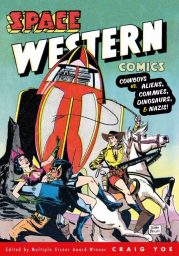 Western Comics that were originally released in 1952 and 1953 and starred Spurs Jackson, an Arizona rancher who is captured (along with some of his ranch hands) by some Martian invaders. Once on Mars, Spurs and his men overthrow the evil Martians and return control of the planet to Queen Thula, who names Jackson the Prime Minister of Mars. Jackson and his friends go on a number of other science fiction adventures over the course of the series.
Western Comics that were originally released in 1952 and 1953 and starred Spurs Jackson, an Arizona rancher who is captured (along with some of his ranch hands) by some Martian invaders. Once on Mars, Spurs and his men overthrow the evil Martians and return control of the planet to Queen Thula, who names Jackson the Prime Minister of Mars. Jackson and his friends go on a number of other science fiction adventures over the course of the series.
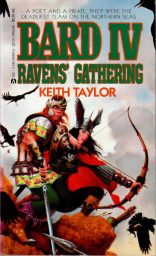 Fantasy (Ken Lizzi): I have been belatedly reading through Keith Taylor’s Bard series. I was going to write “working my way through” but that phrase suggests effort, labor. The Bard books are effortless. Reading them is a joy, not a chore. Book Four, Ravens Gathering, is, as the title suggests, a story of a convergence, a gathering. Characters, entire armies, are gradually brought into position for a climactic confrontation.
Fantasy (Ken Lizzi): I have been belatedly reading through Keith Taylor’s Bard series. I was going to write “working my way through” but that phrase suggests effort, labor. The Bard books are effortless. Reading them is a joy, not a chore. Book Four, Ravens Gathering, is, as the title suggests, a story of a convergence, a gathering. Characters, entire armies, are gradually brought into position for a climactic confrontation.
Comic Books (Dark Worlds Quarterly): In fact, comics had been using a scenario of prehistoric humans living with dinosaurs since before Arthur Conan Doyle exploded the idea on the world in 1912’s The Lost World. Here are some comics that picked up the idea for one story. There were long-running comics that were based on Cavemen & Dinosaurs, like the comic strip Alley Oop, Westerns’s Turok Son of Stone, frequent Edgar Rice Burroughs comics usually featuring Tarzan, Joe Kubert’s Tor.
Men’s Magazines (Mens Pulp Mags): In fact, Puzo wrote scores of stories for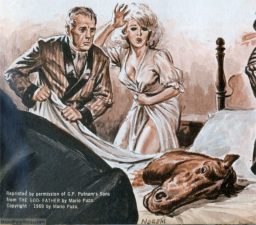 those magazines before Francis Ford Coppola’s 1972 movie version of THE GODFATHER launched his career into the stratosphere. Most of Puzo’s men’s adventure magazine stories were written under the pseudonym Mario Cleri, but many were published under his own name.
those magazines before Francis Ford Coppola’s 1972 movie version of THE GODFATHER launched his career into the stratosphere. Most of Puzo’s men’s adventure magazine stories were written under the pseudonym Mario Cleri, but many were published under his own name.
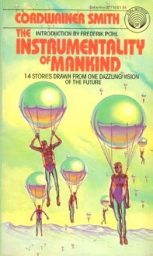 Science Fiction (Vegan Revolution): Cordwainer Smith is more famous than the real-life person behind his work. The author publishing under that name had a short career in science fiction. He was prolific considering the short span he worked in and the busy life he lived under his real name. Paul Linebarger was a famous professor, a noted East Asia scholar, and an expert in psychological warfare. He was also Cordwainer Smith.
Science Fiction (Vegan Revolution): Cordwainer Smith is more famous than the real-life person behind his work. The author publishing under that name had a short career in science fiction. He was prolific considering the short span he worked in and the busy life he lived under his real name. Paul Linebarger was a famous professor, a noted East Asia scholar, and an expert in psychological warfare. He was also Cordwainer Smith.
Fiction (DMR Books): Sir Arthur Conan Doyle‘s historical novel The White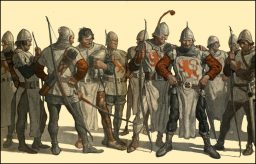 Company was written at the same time as the first round of Sherlock Holmes stories. The novel was initially serialized in The Cornhill Magazine from January through December 1891 and then published in book form in 1892. Doyle said The White Company was the most fun novel of his to write. It was very popular in its time.
Company was written at the same time as the first round of Sherlock Holmes stories. The novel was initially serialized in The Cornhill Magazine from January through December 1891 and then published in book form in 1892. Doyle said The White Company was the most fun novel of his to write. It was very popular in its time.
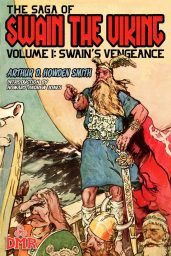 Fiction (DMR Books): Howden Smith is perhaps better known for his epic Grey Maiden series, recently reprinted by Altus Press. But he worked very fluidly and convincingly in the Viking era. Howden Smith apparently based the Swain tales upon the Orkneyinga Saga, the Norse account of the jarls (earls) of the Orkney isles north of Scotland. I’ve got bit of a Viking fetish so this is like throwing red meat to the fan base. See some of my prior posts on the Northern Thing here.
Fiction (DMR Books): Howden Smith is perhaps better known for his epic Grey Maiden series, recently reprinted by Altus Press. But he worked very fluidly and convincingly in the Viking era. Howden Smith apparently based the Swain tales upon the Orkneyinga Saga, the Norse account of the jarls (earls) of the Orkney isles north of Scotland. I’ve got bit of a Viking fetish so this is like throwing red meat to the fan base. See some of my prior posts on the Northern Thing here.
Cinema (Yard Barker): Time and again, Hollywood has turned to the realm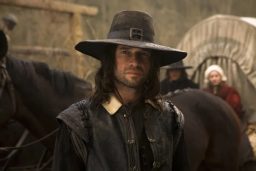 of pulp for inspiration. The term pulp is a remarkably flexible one, but for the most part, it refers to stories that tend to be sensationalist in one form or another. However, the term comes from the cheap paper from which many of the magazines featuring such stories were made. Pulp can cross into many different genres, as seen in many pulp movies throughout the decades. Whether film noir or space adventure, there’s something in the pulp sensibility for everyone.
of pulp for inspiration. The term pulp is a remarkably flexible one, but for the most part, it refers to stories that tend to be sensationalist in one form or another. However, the term comes from the cheap paper from which many of the magazines featuring such stories were made. Pulp can cross into many different genres, as seen in many pulp movies throughout the decades. Whether film noir or space adventure, there’s something in the pulp sensibility for everyone.
D&D (Grumpy Wizard): There is a particularly dumb question that has caused more fights in Dungeons & Dragons fandom than any other. I do have an answer to the question but it’s probably not the answer most querents expect. What is the best version of Dungeons & Dragons?
Fantasy (DMR Books): Robert E. Howard and Fritz Leiber were the two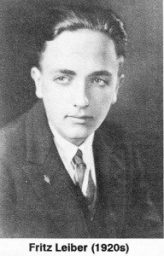 most important writers of Sword and Sorcery. Howard, more or less, invented the genre though there were some stories like “The Sword of Welleran” by Lord Dunsany that could be argued are early examples of the genre. Leiber named it in a letter to Michael Moorcock (who is probably the third most important writer.)
most important writers of Sword and Sorcery. Howard, more or less, invented the genre though there were some stories like “The Sword of Welleran” by Lord Dunsany that could be argued are early examples of the genre. Leiber named it in a letter to Michael Moorcock (who is probably the third most important writer.)
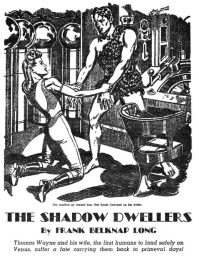 Science Fiction (Dark Worlds Quarterly): Like many, you may not know that Frank Belknap Long wrote Space Opera. His John Carstairs stories are well remembered and could be included here (but aren’t). I discovered the fact when I got a copy of Night Fear (1979), which was sold as a kind of Mythos/Horror book but was actually mostly SF stories with five of them Space Opera. And this is typical of FBL’s legacy.
Science Fiction (Dark Worlds Quarterly): Like many, you may not know that Frank Belknap Long wrote Space Opera. His John Carstairs stories are well remembered and could be included here (but aren’t). I discovered the fact when I got a copy of Night Fear (1979), which was sold as a kind of Mythos/Horror book but was actually mostly SF stories with five of them Space Opera. And this is typical of FBL’s legacy.
Tolkien (Popverse): One of the surprising objects on display at the British Library’s Fantasy: Realms of Imagination exhibition — currently running at the British Library until February 2024 — is a Swedish language edition of J.R.R. Tolkien’s The Hobbit from the 1960s, illustrated by Moomins creator Tove Jansson. It’s a pop cultural oddity and a crossover of two different worlds… and also something that caused such upset at the time that Tolkien actually reworked part of The Hobbit in response.
Arthurian (DMR Books): Did King Arthur exist? I won’t even attempt to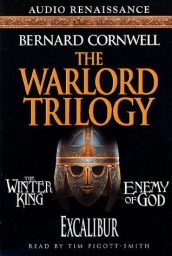 answer that question—‘tis folly. A simple Google search reveals hundreds of articles and a vast corpus of literature devoted to either making the case or debunking the myth. I’m no Arthurian scholar, but I believe a historical Arthur existed.
answer that question—‘tis folly. A simple Google search reveals hundreds of articles and a vast corpus of literature devoted to either making the case or debunking the myth. I’m no Arthurian scholar, but I believe a historical Arthur existed.
D&D (Grognardia): This is a great illustration, one of my favorites in the MM. I also like the inclusion of a bolotomus in the bottom righthand corner of the piece – a great example of the kind of whimsy that categorized a lot of old school fantasy. But how accurately does it depict what Gary Gygax describes in the text? The Monster Manual states, “Known first in India, these evil spirits encased in flesh are spreading.”
James Bond (The Book Bond): Ian Fleming’s second Bond novel brings 007 to the United States on the trail of gangsters and pirate treasure. Live and Let Die was published by Jonathan Cape in the UK on April 5, 1954.
to the United States on the trail of gangsters and pirate treasure. Live and Let Die was published by Jonathan Cape in the UK on April 5, 1954.
Music (DVS Press): This isn’t because Antichrist Superstar is evil per se (though Manson is in his own way) or spiritually dangerous, but because it commits the worst crime in pop music: it’s boring. It’s 17 tracks of droning, recycled riffs, simple drum machine patterns, fuzzed-out sloppy guitars and bass, and one of the most annoying vocal deliveries in music history. Even the lyrics lack any punch.
Weird Tales (M Porcius): The March 1938 has two of our favorite things on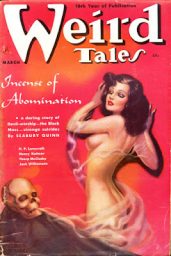 its cover–a fleshless human skull and a topless human lady!–and if the lure of death and sex isn’t enough to make you part with your hard-earned two bits, the cover also lets you know the interior contains work by four big names in the worlds of the weird and of science fiction: H. P. Lovecraft, Henry Kuttner, Thorp McClusky and Jack Williamson. A regular murderers’ row of speculative fiction!
its cover–a fleshless human skull and a topless human lady!–and if the lure of death and sex isn’t enough to make you part with your hard-earned two bits, the cover also lets you know the interior contains work by four big names in the worlds of the weird and of science fiction: H. P. Lovecraft, Henry Kuttner, Thorp McClusky and Jack Williamson. A regular murderers’ row of speculative fiction!
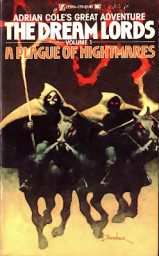 Review (Por Por Books): ‘The Dream Lords: A Plague of Nightmares’ (176 pp.) first was published by Zebra Books in 1975. The followup volumes in the so-called ‘Dream Lords’ trilogy are ‘Lord of Nightmares’ (1975) and ‘Bane of Nightmares’ (1976). Zebra subsequently reissued the series, with different covers, in 1976 and 1977. Trying to figure out the order of the books, based on the cover numbering of the Zebra titles, is confusing: both ‘Lord of Nightmares’ (1977) and ‘Bane of Nightmares’ (1976) are numbered ‘Volume 3?! While ‘Lord of Nightmares’, from 1975, has no cover numbering at all.
Review (Por Por Books): ‘The Dream Lords: A Plague of Nightmares’ (176 pp.) first was published by Zebra Books in 1975. The followup volumes in the so-called ‘Dream Lords’ trilogy are ‘Lord of Nightmares’ (1975) and ‘Bane of Nightmares’ (1976). Zebra subsequently reissued the series, with different covers, in 1976 and 1977. Trying to figure out the order of the books, based on the cover numbering of the Zebra titles, is confusing: both ‘Lord of Nightmares’ (1977) and ‘Bane of Nightmares’ (1976) are numbered ‘Volume 3?! While ‘Lord of Nightmares’, from 1975, has no cover numbering at all.
Warhammer (MSN): The Warhammer 40K franchise has built its way up from a simple table-top game to a global phenomenon that excites people globally. No wonder then that the news of its first TV adaptation got fans both anxious and hyped. Although it will still take a long time before anything releases, Amazon now has the rights to the Empire of Mankind and will definitely use them!
from a simple table-top game to a global phenomenon that excites people globally. No wonder then that the news of its first TV adaptation got fans both anxious and hyped. Although it will still take a long time before anything releases, Amazon now has the rights to the Empire of Mankind and will definitely use them!
 Kaiju (Black Gate): The biggest gift arrives this weekend: Godzilla Minus One, Toho’s first live-action film since 2016’s Shin Godzilla. And what a gorgeous, furious, thrilling, tear-stained gift it is. It’s a fitting anniversary homage to the creators of the 1954 classic, especially original director Ishiro Honda, and easily one of the best Godzilla films—and best giant monster films—ever made.
Kaiju (Black Gate): The biggest gift arrives this weekend: Godzilla Minus One, Toho’s first live-action film since 2016’s Shin Godzilla. And what a gorgeous, furious, thrilling, tear-stained gift it is. It’s a fitting anniversary homage to the creators of the 1954 classic, especially original director Ishiro Honda, and easily one of the best Godzilla films—and best giant monster films—ever made.
Cinema (Bounding Into Comics): While enjoying the silence of having the rest of the house napping, I packed away the ornaments from our wilting Christmas tree, and finally said “now I can watch Rebel Moon Part One: A Child Of Fire.”Spoiler alert: I wish I hadn’t. Also there will be spoilers but the movie is paint by numbers so, can it really be spoiled?
rest of the house napping, I packed away the ornaments from our wilting Christmas tree, and finally said “now I can watch Rebel Moon Part One: A Child Of Fire.”Spoiler alert: I wish I hadn’t. Also there will be spoilers but the movie is paint by numbers so, can it really be spoiled?
Warhammer (Lord Samper’s Library): After not finishing ‘Witchbringer’ (not the book’s fault, I still think it could be worth your time), I thought I’d change pace a little and go for a short, sharp burst of something instead. Something that would blow a few cobwebs away and wake me up a bit :o) Now in my experience, there’s nothing shorter and sharper than a Warhammer short story so that was the direction of my reading taken care of. And as far as the focus went, I’ve read a few Warhammer tales, in my time, but I’ve never read a tale that looks at the events of the 41st Millennium through the eyes of the rapacious Tyranids.
Tolkien (Darth Gandalf): In this video, we explore the tale of Tal-Elmar, perhaps Tolkien’s least well-known story.
Fantasy (Benespen): Alexander Palacio’s The Turquoise Serpent is R. E.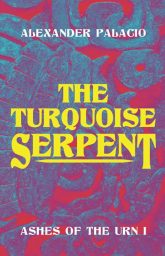 Howard’s Conan transposed into a demon-haunted pre-Columbian Mesoamerica, and it is awesome. I imagine a certain fraction of my audience will know exactly what that means without elaboration, but for the rest of you let’s dive in and see why this works so well.
Howard’s Conan transposed into a demon-haunted pre-Columbian Mesoamerica, and it is awesome. I imagine a certain fraction of my audience will know exactly what that means without elaboration, but for the rest of you let’s dive in and see why this works so well.
Clark Ashton Smith (DMR Books): It would appear that Clark composed “The Tale of Satampra Zeiros” (henceforth initialized as ‘TToSZ’) sometime during the summer or early fall of 1929. To put things in their S&S context, the first Solomon Kane tale, “Red Shadows” had appeared in Weird Tales in August of 1928. “The Shadow Kingdom” had seen print exactly a year later, in August 1929. Did Robert E. Howard’s horrific, bloody yarn of Kull spark Smith’s imagination?
D&D (Sacnoth’s Scriptorium): So, I was saddened to hear of the death of Jannell Jaquays this week. Jannell was one of the titans, someone (like Dave Sutherland or Tom Moldvay or Mike Carr) whose contributions to D&D went back to what was for me the dawn of time but were still around years later when I came on the scene. Jannell wrote the first module I ever bought: DARK TOWER, from Judges Guild –still a favorite of mine* — which shaped my idea of what an AD&D adventure shd be.
Tolkien (Dimitra Fimi): Tolkien’s essay On Fairy-Stories has been widely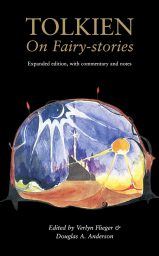 regarded as an important text not only for understanding Tolkien’s own mythopoeic fantasy, but also as an analytical tool for discussing fantasy literature in general. Tolkien first delivered this essay as a lecture, the Andrew Lang lecture at the University of St. Andrews in 1939, and it was published during Tolkien’s lifetime in 1947 in Essays Presented to Charles Williams, edited by C.S. Lewis, and posthumously in a number of different collections, most notably in The Monsters and the Critics, edited by Christopher Tolkien.
regarded as an important text not only for understanding Tolkien’s own mythopoeic fantasy, but also as an analytical tool for discussing fantasy literature in general. Tolkien first delivered this essay as a lecture, the Andrew Lang lecture at the University of St. Andrews in 1939, and it was published during Tolkien’s lifetime in 1947 in Essays Presented to Charles Williams, edited by C.S. Lewis, and posthumously in a number of different collections, most notably in The Monsters and the Critics, edited by Christopher Tolkien.
 Science Fiction (Fantasy Literature): As revealed in David J. Schow and Jeffrey Frentzen’s essential reference book The Outer Limits: The Official Companion (1986), that TV series’ producer and co-creator, Joseph Stefano, was laboring with some pretty serious concerns before the airing of Season 1’s ninth episode, “Corpus Earthling.” To quote from the book: “’When “Corpus Earthling” was finished and the music added, I sat there wishing I could say don’t air this,’ said Joseph Stefano.
Science Fiction (Fantasy Literature): As revealed in David J. Schow and Jeffrey Frentzen’s essential reference book The Outer Limits: The Official Companion (1986), that TV series’ producer and co-creator, Joseph Stefano, was laboring with some pretty serious concerns before the airing of Season 1’s ninth episode, “Corpus Earthling.” To quote from the book: “’When “Corpus Earthling” was finished and the music added, I sat there wishing I could say don’t air this,’ said Joseph Stefano.
Horror (Skulls in the Stars): On a recent jaunt to my local B&N, the short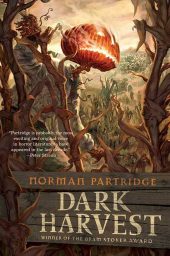 horror novel Dark Harvest (2006) by Norman Partridge caught my eye. Even though the book originally came out in 2006, I imagine it was displayed prominently because a movie adaptation is coming out online on October 11! Furthermore, as the cover indicates, it was the winner of the Bram Stoker Award for Best Long Fiction of 2006, so it was definitely worth checking out.
horror novel Dark Harvest (2006) by Norman Partridge caught my eye. Even though the book originally came out in 2006, I imagine it was displayed prominently because a movie adaptation is coming out online on October 11! Furthermore, as the cover indicates, it was the winner of the Bram Stoker Award for Best Long Fiction of 2006, so it was definitely worth checking out.
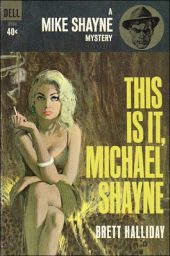 Crime Fiction (Moon-light Detectives): This is It, Michael Shayne (1950) is the eighteenth novel in the Michael Shayne series by “Brett Halliday,” penname of Davis Dresser, which attracted my attention for exactly the same reason as The Corpse That Never Was (1963) – promise of a tough nut (i.e. an impossible crime) to crack. Shayne is a hardboiled private eye who, every now and then, “solved classical locked room mysteries.” This is It, Michael Shayne is cited as an example and The Corpse That Never Was is another often marked as one, but neither are locked room mysteries. Only legitimate locked room mystery in the series appears to be Murder and the Married Virgin (1944).
Crime Fiction (Moon-light Detectives): This is It, Michael Shayne (1950) is the eighteenth novel in the Michael Shayne series by “Brett Halliday,” penname of Davis Dresser, which attracted my attention for exactly the same reason as The Corpse That Never Was (1963) – promise of a tough nut (i.e. an impossible crime) to crack. Shayne is a hardboiled private eye who, every now and then, “solved classical locked room mysteries.” This is It, Michael Shayne is cited as an example and The Corpse That Never Was is another often marked as one, but neither are locked room mysteries. Only legitimate locked room mystery in the series appears to be Murder and the Married Virgin (1944).
Sherlock Holmes (Frontier Partisans): The Holmes on the Range series by Steve Hockensmith is one of the most enjoyable reads around. I discovered it in short form in the pages of Ellery Queen’s Mystery Magazine. This led me to seek out the first book in the series Holmes on the Range.
Pulp (Paperback Warrior): According to IMDB, Charles Tenney Jackson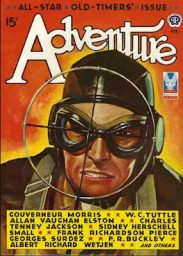 (1874-1955) wrote the novels The Golden Fetter (1917), The Show (1927), and The Eagle of the Sea (1926). Jackson also wrote hundreds of stories for magazines, including Argosy, The Popular Magazine, and Short Stories. He also penned a number of stories for Adventure, which is where I discovered his February 1943 entry “A Gun for France”. I’m always in the mood for buried treasure and nautical adventure, so the illustrations by Samuel Cahan immediately spoke to me.
(1874-1955) wrote the novels The Golden Fetter (1917), The Show (1927), and The Eagle of the Sea (1926). Jackson also wrote hundreds of stories for magazines, including Argosy, The Popular Magazine, and Short Stories. He also penned a number of stories for Adventure, which is where I discovered his February 1943 entry “A Gun for France”. I’m always in the mood for buried treasure and nautical adventure, so the illustrations by Samuel Cahan immediately spoke to me.
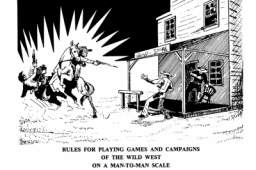 D&D (Isegoria): When Dungeons & Dragons was young, it had a western counterpart called Boot Hill that I only knew through the crossover rules in the Dungeon Master’s Guide. Adam Rutskarn went back and gave this “cowboy miniatures game from the 1970s” a try:
D&D (Isegoria): When Dungeons & Dragons was young, it had a western counterpart called Boot Hill that I only knew through the crossover rules in the Dungeon Master’s Guide. Adam Rutskarn went back and gave this “cowboy miniatures game from the 1970s” a try:
Please give us your valuable comment